- 2 号 p. 29-
- 1 号 p. 1-
- |<
- <
- 1
- >
- >|
-
I MADE MULIARTA, GEDE WIRATA2020 年 49 巻 2 号 p. 29-35
発行日: 2020年
公開日: 2021/09/20
ジャーナル フリーErgonomic aspects, especially anthropometric measures, are essential factors indesigning a workstation. The most facilities in junior high schools often remain unchanged or not adjusted for new students. Those facilities include tables, chairs, boards, etc. The study aims to know about anthropometric dimensions of students in junior high schools in Denpasar in 2016. The research is descriptive (anthropometric survey) involving junior high school students amounting to 901 at ten junior high schools in Denpasar as a sample determined by random cluster sampling. These 901 volunteered test subjects are divided into 480 male and 421 female students. Among 15-dimensional indicators in a standing position, only 3 dimensions did not show significant results between the two genders, namely lower leg length, chest circumference and buttocks circumference. In a sitting position, among 21 dimension indicators, only 7 dimensions did not show significant results between the two genders. Anthropometric measurements of junior high school students in Denpasar had significantly different results in the sitting and standing dimensions for both genders.
抄録全体を表示PDF形式でダウンロード (197K) -
AMITAVA PAL, AFZALUN NESHA MOLLICK, PRAKASH C. DHARA2020 年 49 巻 2 号 p. 37-43
発行日: 2020年
公開日: 2021/09/20
ジャーナル フリーThe work environment of rubber factories is contaminated with hazardous substances and workers may be exposing to these hazards during rubber manufacturing. The study aimed to evaluate pulmonary function status of rubber industry workers in West Bengal, India. This study was carried out on 252 participants. Among them, 150 were rubber industry workers and 102 were office workers (control). Pulmonary function parameters of the participants were determined by a portable spirometer. Respiratory symptoms such as cough, phlegm, dyspnea, wheezing and chest pain were studied. The lung function parameters of the rubber industry workers were significantly lower than those of the control subjects. The most prevalent symptom among the workers was phlegm which followed by dyspnea, productive cough, chronic cough, wheezes and chest pain. The lung function parameters of the workers were found to be related to the duration of exposure and smoking habits. The likelihood of having different respiratory symptoms was significantly higher among the rubber industry workers compared to the controls. It may be concluded that the respiratory efficiency of rubber industry workers was decreased and the occurrence of respiratory symptoms was higher than that of non-exposed healthy persons, which may be due to exposure to hazardous substances during rubber manufacturing.
抄録全体を表示PDF形式でダウンロード (177K) -
PRITHA CHAKRABORTY, PIYA MAJUMDAR, SASANGBAHA MANDI, SUBHASHIS SAHU2020 年 49 巻 2 号 p. 45-52
発行日: 2020年
公開日: 2021/09/20
ジャーナル フリーConch shell industry is an age old sector of handicrafts in India. This industry provides livelihood to a huge number of artisans. These artisans show extreme craftsmanship through their unique pieces of work. The job profile of the conch shell workers depicts that the task of conch shell workers is embedded with risk factors for musculoskeletal problems. Unfortunately, there is a dearth of data from the occupational view point. So, the present study has been taken up to identify the different types of musculoskeletal problems among them and also to find the main contributing issues behind the occurrence of those problems. In order to identify the causative factors, physiological profiling and posture analysis are done. Factors like year of exposure, BMI and duration of working hours are significantly related with the prevalence of musculoskeletal problems among the conch shell workers in addition to these awkward working postures. In order to ameliorate the above-mentioned problems, more studies and implementation of ergonomic interventions are required.
抄録全体を表示PDF形式でダウンロード (528K)
-
KENTA TSUMURA2020 年 49 巻 2 号 p. 53-56
発行日: 2020年
公開日: 2021/09/20
ジャーナル フリーAlthough ostracized individuals desire to reconnect with others, they may experience difficulty in finding new social connections by themselves. In such instances, the helping behaviour of those who have witnessed the ostracism may be beneficial. Research has revealed that after observing ostracism, highly empathic individuals behave prosocially toward the ostracized. Research has also demonstrated that feelings of guilt inspire witnesses of ostracism to help the ostracized. In this study, the relationship between witnesses' guilt, empathy and helping motivation toward people who have been ostracized was examined. The results of multiple regression analysis revealed that guilt and empathy, especially other-oriented emotional reactivity, have positive effects on helping motivation toward ostracized individuals. In addition, the analysis found that guilt contributed to a significant change in the explained variance. This result suggests that witnesses' guilt and empathy affect helping behaviour individually.
抄録全体を表示PDF形式でダウンロード (172K)
-
2020 年 49 巻 2 号 p. 57
発行日: 2020年
公開日: 2021/09/20
ジャーナル フリーPDF形式でダウンロード (51K)
-
2020 年 49 巻 2 号 p. 58-60
発行日: 2020年
公開日: 2021/09/20
ジャーナル フリーPDF形式でダウンロード (98K)
- |<
- <
- 1
- >
- >|